Figures & data
Figure 1. Schematic representation of the modelled water-cooled and air-cooled monopole antenna ((a) and (b)) and the coaxial dipole antenna ((c) and (d)). In the case of air cooling, the cooled section reached over the complete length of the modelled oesophagus ((b) and (d)). These longitudinal cross sections are not to scale.

Figure 2. Schematic representation of the computational domain used for the E-Field (left) and temperature (right) calculations.
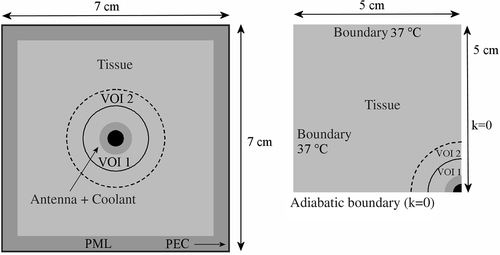
Figure 3. Schematic picture of a 27-MHz multi-electrode current source interstitial applicator in a catheter (left). The right picture shows the computational domain used for the power and temperature calculations.
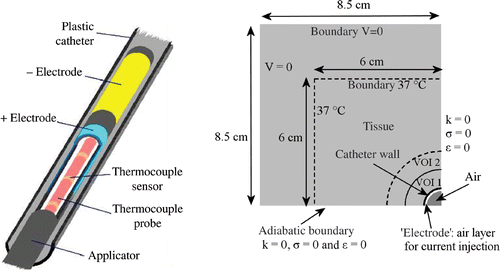
Table I. The dielectric and thermal properties used in the simulations; conductivity (σ (S m−1)), relative permittivity (ε (−)), density (ρ (kg m−3)), specific heat capacity (c (J kg−1°C−1)) and thermal conductivity (k (W m−1°C−1)).
Figure 4. Radial (a) and axial (b) SAR profiles of the different intraluminal heating devices. Radial profiles were determined at z = 0 and axial profiles were determined over the first tissue voxels next to the applicator. In the connector is located at the right-hand side.
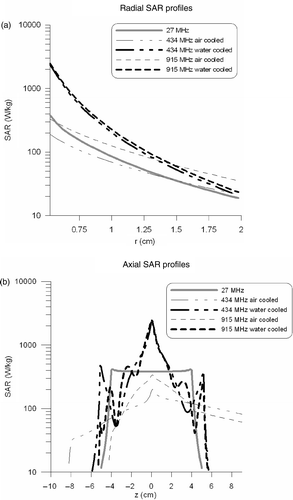
Table II. SAR and thermal penetration depths at z = 0 of the different intraluminal heating devices.
Figure 5. Radial (a) and axial (b) temperature profiles of the different intraluminal heating devices. Radial profiles were determined at z = 0 and axial profiles were determined over the first tissue voxels next to the applicator.
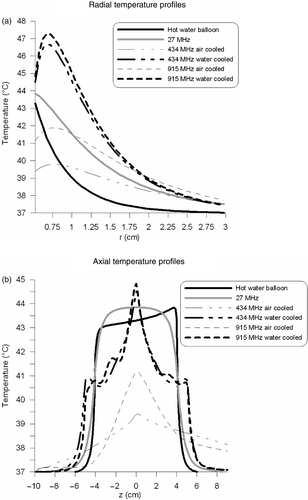
Figure 6. Contour plots of the temperature distribution resulting from a hot water balloon (left) and a 27-MHz current source applicator consisting of one electrode segment (right). The flow direction in the hot water balloon is indicated with an arrow.
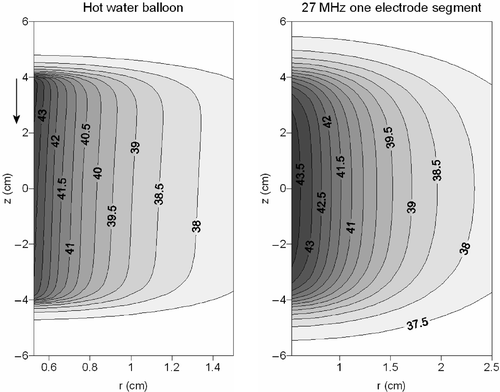
Figure 7. Contour plots of the temperature distribution resulting from a 434-MHz air-cooled (left) and water-cooled (right) coaxial monopole antenna. The flow direction is indicated with an arrow.
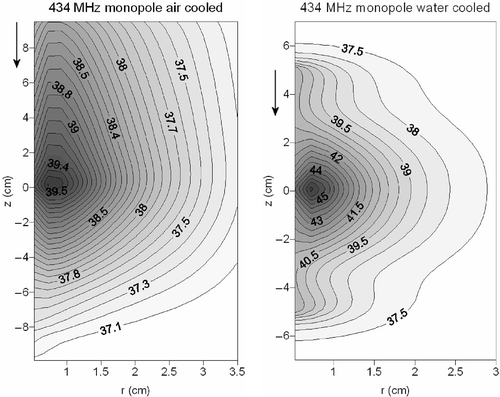
Figure 8. Contour plots of the temperature distribution resulting from a 915-MHz air-cooled (left) and water-cooled (right) coaxial dipole antenna. The flow direction is indicated with an arrow.
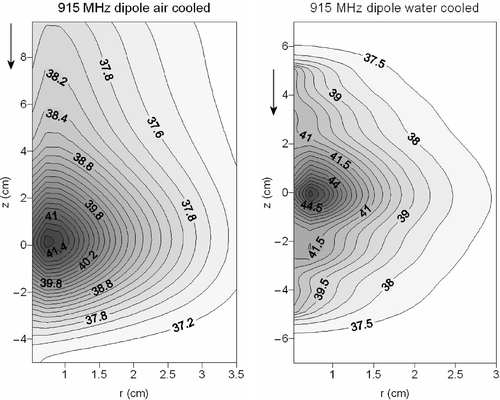
Figure 9. Contour plots of the temperature distribution in inhomogeneous tissue resulting from a hot water balloon (left) and a 27 MHz current source device (right). The flow direction in the hot water balloon is indicated with an arrow.
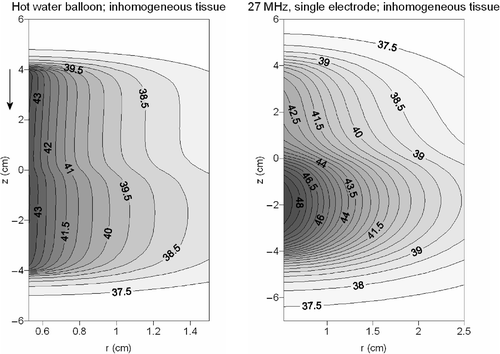
Figure 10. Contour plot of the temperature distribution in inhomogeneous tissue resulting from a 27-MHz current source device with two electrodes, using current amplitudes 1:0.66.
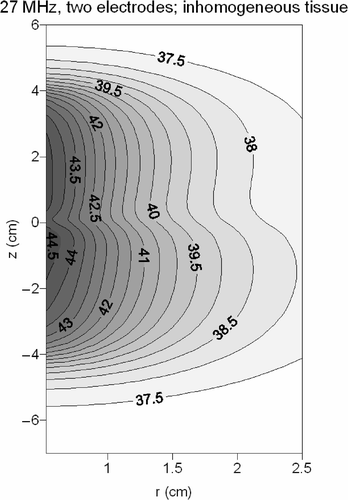
Table III. Temperatures (T90 and T10) and the heterogeneity coefficient (HC) determined over an annulus around the oesophagus with an inner radius of 0.5 cm and an outer radius of and 1 and 1.5 cm. This annulus reached 4 cm above and below the aperture of the 434- and 915-MHz antennas and over the complete length of the hot water balloon and 27-MHz device.